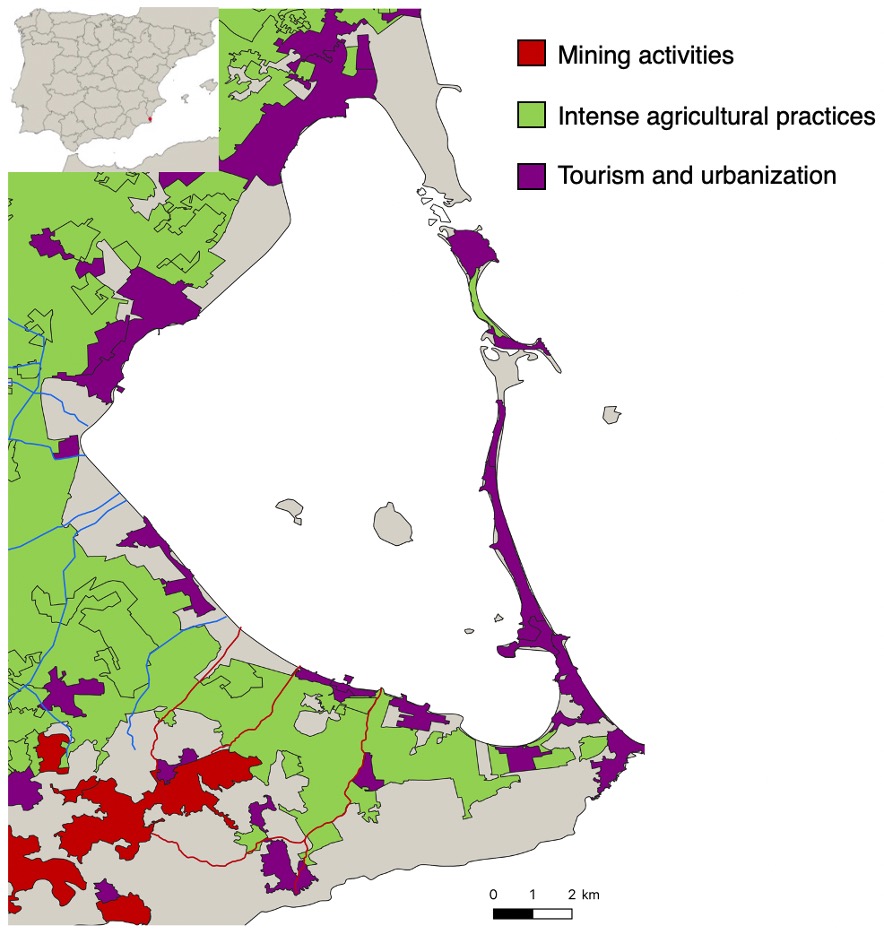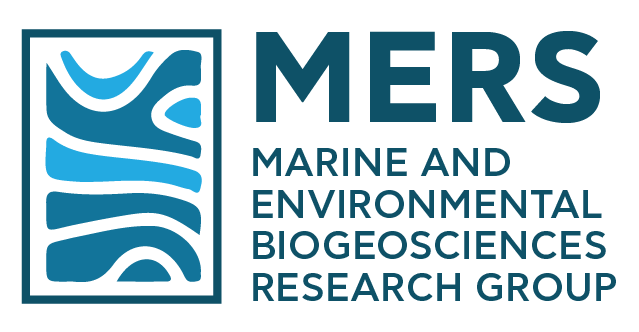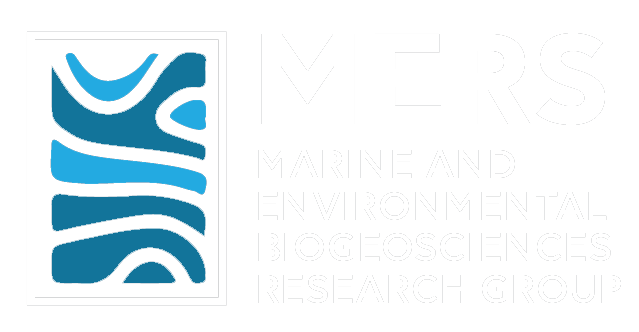Following OPAL Project, which aimed to understand the major pathways delivering nutrients, trace metals, and pollutants originating from anthropogenic activities to the Mar Menor coastal lagoon, the WINDERS project strives to elucidate the role of sediment resuspension as a source delivering these same solutes to the lagoon and its role as a driver of the eutrophication events occurring in the lagoon waters in 2016, 2019 and 2021.
This project will focus on:
- identifying the origin of solutes (agriculture, urbanism, tourism, and mining wastes) present in sediments
- quantifying the transfer of these compounds from sediments to the water column in stationary conditions and during sediment resuspension events caused by wind and storm events
- elucidating the contribution of solutes driven by resuspension
events on the eutrophication events
WINDERS proposes a multidisciplinary approach combining radioactive and stable tracers, microbiological assessments, geophysical techniques, and modeling tools to address these objectives.
The project results will advance our understanding of the direct and indirect impacts of human activities on the vulnerability of Mar Menor. We will develop a broad conceptual model that quantifies the relative contribution of the different solute sources to lagoon waters, including the yet overlooked sediment resuspension and the already considered sources (i.e., streams, groundwater discharge, atmospheric deposition). This conceptual model will improve our ability to understand the drivers of the current degradation of the Mar Menor.
WINDERS will allow informing public institutions and stakeholders to substantiate policies and strategies to improve the management of coastal water resources and ecosystems and to enhance the resilience of Mar Menor to future global and climate changes, a knowledge that can be extended to other coastal Mediterranean lagoons and other vulnerable coastal systems.

Main anthropogenic activities affecting the lagoon (Map: Irene Alorda Montiel)
Consortium
-
Dr. Valentí Rodellas Vila, Physics Department and Institute of Environmental Science and Technology, Universitat Autònoma de Barcelona
-
Dr. Javier Gilabert Cervera, Departamento de Ingeniería Química y Ambiental, Universidad Politécnica de Cartagena
-
Dr. Juan Santos Echeandía, Instituto Español de Oceanografía
-
Dr. Teresa Serra Putellas, Physics Department, Universitat de Girona
-
Dr. Marianna Soler Ortega, Physics Department, Universitat de Girona
-
Dr. Jordi Colomer Feliu, Physics Department, Universitat de Girona
-
Dr. Anna Soler Membrives, Animal and plant biology, and ecology, Universitat Autònoma de Barcelona
-
Dr. Paula Sánchez, Instituto Español de Oceanografía, Vigo
-
Dr. Patricia Bernárdez Rodríguez, Instituto Español de Oceanografía, Vigo
-
Dr. Clara Ruiz González, Institut de Ciències del Mar, Barcelona
-
Dr. Andrea García Bravo, Institut de Ciències del Mar, Barcelona

